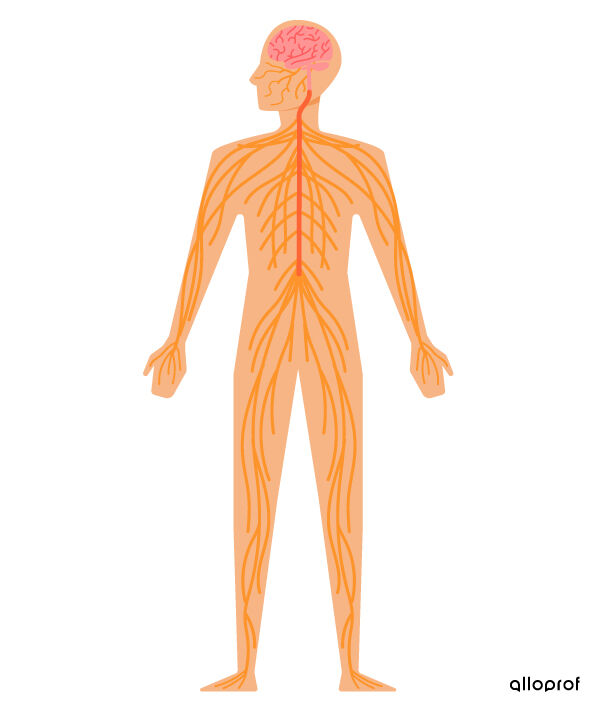The nervous system includes all the organs involved in the reception of a stimulus and in the production, transmission and processing of nerve impulses.
The central nervous system (CNS) includes the brain and the spinal cord.
The peripheral nervous system (PNS) includes all the nerves in the human body, except those contained in the central nervous system.
Neurons, or nerve cells, are the smallest living part of the nervous system responsible for transmitting nerve impulses.
Humans use several systems to interact with their environment. First, the sensory receptors in sensory organs capture stimuli in the environment. These stimuli are transformed into impulses that travel through the body to the brain. Once the information is processed, the brain sends an impulse back to the body to produce a reaction to the stimuli.
